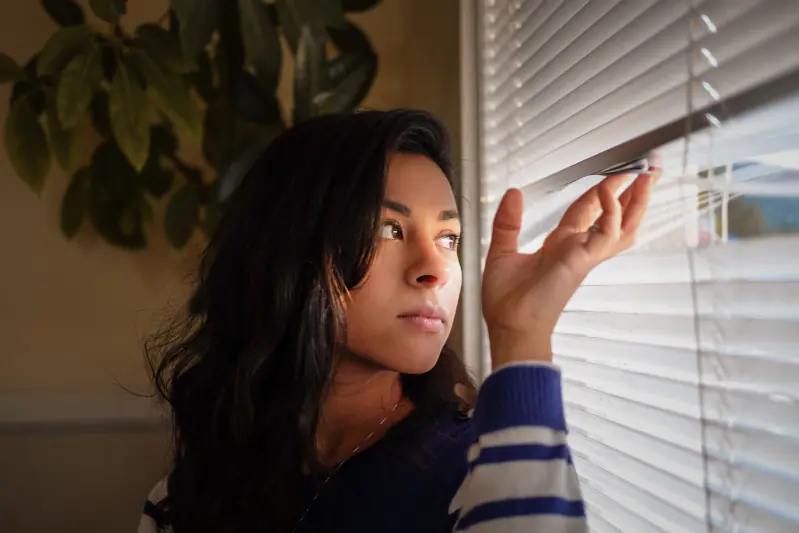
Tanning came into fashion in the last century and is still popular among fashionistas. How harmful or beneficial is tanning? How to sunbathe correctly to protect your skin from burns? Not everyone knows the answers to these questions. But the question is: is it possible to sunbathe through glass? - at first glance it seems quite simple. "Of course not!" - you say. However, why not? After all, the sun warms through glass, and there are different types of glass.

What is a tan and why does it appear?
Our sun releases energy in the form of light, heat and ultraviolet radiation. Ultraviolet rays, unlike visible light energy, are invisible and cannot be felt either, but they have a unique property - the ability to modify the chemical structure of matter and cells.
When ultraviolet radiation hits human skin, melanin is produced in its middle layer, the task of which is to control the influence of UV rays on the surface of the body.
Tanning is a protective reaction of the skin.
Melanin darkens under the influence of ultraviolet rays, acquiring a brown tint. And through this skin color, harmful rays cannot penetrate deep into the body and cause harm to it.
The skin's ability to produce melanin varies from person to person, depends on a person's genetics, and is often inherited. It happens that the skin is completely unable to produce melanin; for such people, exposure to the sun is contraindicated.
Ultraviolet radiation in small doses is necessary for the human body. Under the influence of ultraviolet radiation, the body produces vitamin D, which is especially necessary for children.
Before the skin gets a nice tan, it usually becomes inflamed and turns pink. With prolonged exposure to the sun, the skin can become very inflamed and a burn will appear on the body. It should be understood that prolonged exposure to the sun is very dangerous. Tanning needs to be achieved carefully, gradually, at a certain time, and the longer the better. Once your skin reaches the desired brown tone, sun exposure is safer.
Types of ultraviolet rays
Ultraviolet rays come in different lengths and, depending on this factor, are divided into three groups:
- Group A rays have a wavelength from 315 to 400 nanometers - they penetrate the atmosphere, glass, and penetrate the upper layer of human skin, but they almost do not reach the middle layer and therefore the tan almost does not stick with such rays.
- Group B rays - their length is from 280 to 315 nanometers - some of them do not pass through the ozone layer, they cannot penetrate glass, human skin is capable of reflecting 70% of such rays, 20% penetrate only into its very top layer, but the remaining 10% UVB rays are able to penetrate the middle layer of the skin and give the skin a tan.
- Group C rays – from 100 to 280 nanometers. Such rays are capable of destroying all living things, but they do not pass through the atmosphere.

Tanning through an apartment window - myth or reality
Is it possible to get tanned through window glass? Let's figure it out.
Only group A ultraviolet rays can pass through glass, which have a gentle effect on the skin, almost do not penetrate into its middle layer, as a result, melanin is not released and the skin does not darken.
Moreover, if a person is behind glass in his kitchen or glassed-in balcony, tanning through the glass is impossible. After all, group B rays are not able to penetrate ordinary window glass. Since we know that only under the influence of these rays does a tan appear on the human body, we can say with confidence that the tan does not fall through glass and it is impossible to tan through an ordinary window, except to warm up.
Conclusion: you cannot sunbathe through an apartment window or on a balcony.

Car tan
Is it possible to get tanned through the windshield of a car while traveling or just sitting in the car?
Many motorists are sure that they sunbathe while driving for a long time, especially in the summer. The windshield of a car is made of the same material as windows in residential buildings. Group B ultraviolet rays are not able to penetrate car glass. It is possible that the A-rays that penetrate through it, with prolonged exposure to the skin, still fall under its top layer, causing a light tan, but this will probably take several tens of times more time than when human skin is exposed to rays -IN.
That is, theoretically, only truck drivers who drive all day long will be able to get a tan.
Conclusion: it is IMPOSSIBLE to tan through the glass of a car window.

Tanning through organic and quartz glass
Is it possible to tan through organic and quartz glass?
It should be noted that there are different types of glass and among them there are those that transmit infrared rays of all groups. For example, some types of organic glass allow UV rays to pass through. Quartz glass also transmits ultraviolet waves, which is why quartz glass is used in lamps intended for quartzing rooms.
Conclusion: you can get sunburned through a glass window, but it all depends on the glass itself.

Whether the skin tans through glass or not, the answer is clear - you cannot tan unless through certain glasses.

Ultraviolet
Solar radiation causes a darkening of the human skin, which is called tanning. It is generally accepted that if sunlight falls through transparent objects, then all its rays fully reach the surface of the skin, so tanning can also occur in this case. But in reality this is not so: a person practically does not sunbathe through glass. This is explained by the fact that glass blocks part of the radiation, which is responsible for the production of melanin in the human body.
Ultraviolet radiation is divided into three types: A, B and C. The first is long-wave: these waves act unnoticed, penetrating the skin and affecting various internal processes. These rays reduce the amount of water, collagen and elastin in the epidermal cells, causing the skin to age faster. Long-wave radiation can cause an allergic reaction and slight redness, but does not contribute to the appearance of a tan, since melanin does not appear in the cells. Under its influence, only precursors of this substance are formed - elements without color, which only when oxidized can cause darkening of the skin.
Short-wavelength B radiation causes human melanocytes to produce melanin, resulting in darker skin. If the dose of this radiation is high, a burn may occur, and with regular exposure to large amounts of type B rays, skin cancer appears.
C rays almost never reach the Earth's surface, being absorbed by the ozone layer.
Tanning through glass
Glass transmits only long-wave radiation, and blocks B rays, so the production of melanin under the influence of sunlight behind the glass is impossible. But long waves of type A do not lose their ability to influence human skin: they not only cause aging, but also prepare the skin for exposure to rays B. With prolonged exposure to the rays of the sun penetrating through glass, a slight redness is possible, but no more: melanocytes do not work in this case. It is theoretically possible to tan through glass if you are constantly exposed to radiation. But this is not a tan in the truest sense of the word: it is heat damage to the skin that leads to redness.
It is the constant action of long-wave radiation that can explain why the hands of car drivers on the window side darken after long trips.
All of the above applies to ordinary window glass; other types - quartz or plexiglass - transmit ultraviolet rays much better, and they are used for solariums.

Many people believe that you cannot tan through glass and the question is: “is it really possible to tan through a window?” for them it is elementary. “No,” naturally, they will say and they will be very mistaken, because everyone knows that drivers and people working near windows tan quite well. But the physics of this process is not at all as simple as it seems at first glance.
You don’t need to think long and have any specialized knowledge to answer that it is possible to get sunburned through a car window. It is important to understand how skin darkening occurs and what circumstances can affect it.
The sun's ray contains several types of electromagnetic radiation. The body perceives all of them individually: some are perceived as a source of heat, and others as a source of light. Naturally, no one has ever been able to touch or feel ultraviolet radiation.
There are three types of ultraviolet rays:
1) A-radiation. Radiations of this type are long-wave and completely penetrate the surface of the Planet. A person does not notice the effects of such radiation at all. Rays of this type easily penetrate even into the deep layers of the skin. Because of this, the epidermis ages prematurely, so such radiation is very harmful to the skin. The rays negatively affect the skin: they dehydrate and have a destructive effect on collagen. The skin may even experience severe redness. Many people develop a so-called sun allergy after such radiation. If contact with A-rays is not prolonged, they will not cause severe harm to health.
2) B-radiation. These rays are short wavelength. They make their way to the Earth, although when they encounter interference, the rays are partially scattered. When exposed to B rays, melanocytes produce a pigment called melanin much faster. The fastest tanning can be achieved thanks to this type of radiation. But with prolonged contact, you can get burned and burn.
3) Gamma radiation. Such rays are the most dangerous and have a traumatic effect on all living organisms. Thanks to their good penetrating effect, gamma rays quickly penetrate all living cells. But fortunately, the ozone layer traps most of them. Otherwise, everything on the Planet would burn out. For a person, such radiation is dangerous because he does not feel it at all. Therefore, the consequences can be unpredictable, even fatal. The danger of such radiation lies in the fact that they tend to accumulate in the body.
Based on the above, we conclude: in order for the tan to be equal, contact with ultraviolet rays is still necessary!
Is it possible or not to sunbathe through a window?
Glass is a transparent material that allows light to pass through easily. It blocks gamma and beta rays, but alpha rays cannot be stopped by any glass. And as is already known, A-rays affect the epidermis extremely slowly. The maximum you can get is slightly reddened skin. After some time this will pass. Despite all the great desire, it will not be possible to get an even tan, because the radiation is not so intense.
It is possible to get tanned through a car window, but certain conditions must be observed. First of all, the radiation must be constant. You can get a beautiful tan when your skin has the pigment melanin. Everything is explained very simply: tan tends to wash off and fade. And melanocytes under the influence of the sun produced a lot of melanin. And now, even when exposed to short-wave radiation, the skin will acquire a chocolate color



